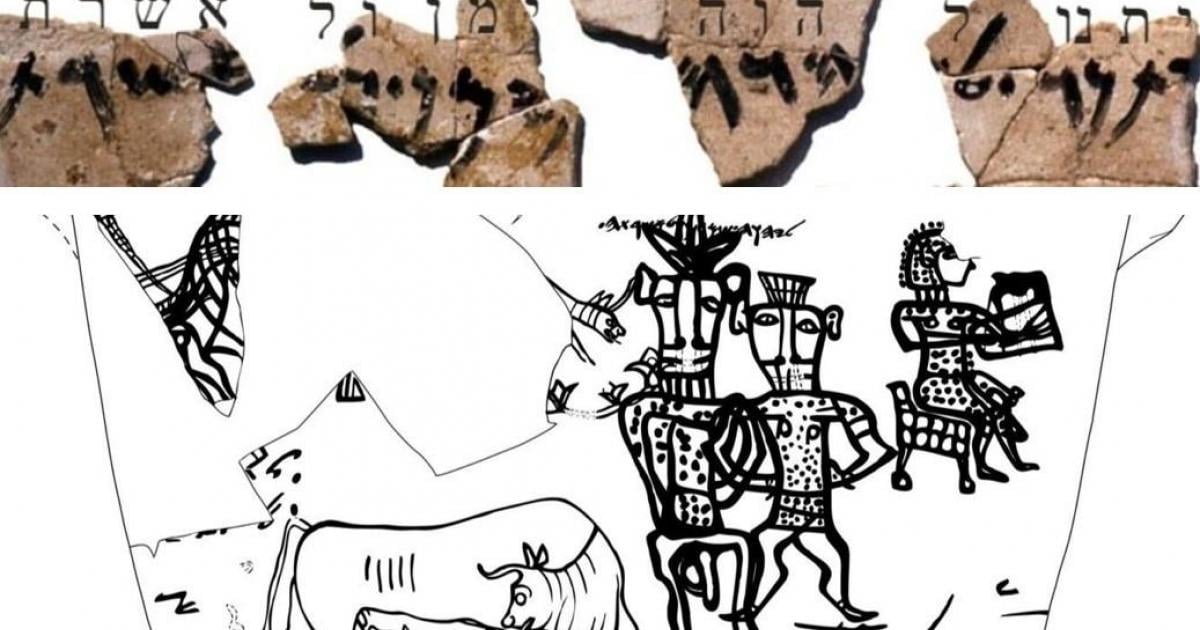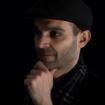
Kuntillet Ajrud: The Ancient Fortress that Puzzles Archaeologists
In the Sinah desert stands Kuntillet Ajrud, a remote settlement that was found in 1975 by the archaeologist Ze’ev Meshel of the University of Tel Aviv. The settlement is dated to the 8th century BC and is suggested to be one of the border fortresses built by King Solomon. The name of the fortress in Arabic, means ‘Hill of the Water-Source’.
- Bronze Age Cult Complex Discovered In Judean Foothills May Have Been Dedicated To Baal
- Baal And Moloch, Did The Ancient Gods Of The Levant Demand Child Sacrifices?
Religious Syncretism: Yahweh, El, and Baal Worship at Kuntillet Ajrud
Two major buildings were found preserved at Kuntillet Ajrud. The largest one contained numerous inscriptions—of early Hebrew and Phoenician writings—and paintings on the walls, door posts, pottery and stone jars, as well as numerous drawings of men, animals and gods. It is interesting to note that in addition to Yahweh (the God of the Bible) being mentioned in the inscriptions, the Canaanite gods, El and Baal, were also worshipped. It was only later that Baal was ‘transformed’ to a demon and was considered evil in the scriptures.
- Asherah: God’s Forgotten Wife
- Goddess Ninkharsag—Ancient Powerful Mother who Faded into The Holy Ghost

Baal with Thunderbolt (Public Domain)
The Connection Between Yahweh, Baal, and El in the Inscriptions
Even if it has been proposed that Kuntillet Ajrud was used as a fortress, the actual nature and function of the place is not clear. Various remains that were found, including the inscriptions, suggest that it also served as a kind of religious center, with one phrase of particular importance creating debate amongst archaeologists: “I have blessed you to Yahweh of Shomron (Samaria) and to His Asherah”. Asherah was a Semitic mother goddess. The question has therefore been debated among scholars as to whether she may have been the wife of God? Asherah was known to be the consort of the god El, however it seems that she disappears at some point from Phoenician/Canaanite inscriptions.
Under that inscription is a drawing of two figures, possibly God and Asherah, and one that resembles the Egyptian god Bes, which is a collective name for a group of dwarf deities. A few scholars have suggested that the drawings were added after the initial inscriptions and may not be related, but both of the drawings are very interesting in terms of how they present the God and his possible wife—if that is their purpose, of course.

Painted on a jar found in Kuntilat Ajrud in the Sinai Peninsula. Might point to a local polytheistic belief. Polytheism was outlawed in Jewish Sinai, though some local mystery cults still continued with the practice, though were often stoned or executed. (Public Domain)
Another inscription found on the walls says the following:
“When God shines forth … Yahweh … The mountains will melt, the hills will crush … The Holy One over the gods … Prepare to bless Ba‘al on a day of war … to the name of El on a day of war”
Kuntillet Ajrud baffles archaeologists—especially biblical archaeologists—because of the complexity of early Israelite worship and the mixing of the god of the Bible with many different deities, showing a different ‘face’ of the god and a gradual movement towards monotheistic worship without any other ‘interferences’. The controversial inscriptions at Kuntillet Ajrud serve to shake the foundations of monotheism.
Top image: Painted on a jar found in Kuntilat Ajrud in the Sinai Peninsula. Right: Part of the first line of the inscription found on a large "Petus" type storage can at Kuntillet Ajrud in northern Sinai. The usual translation of the two lines is: 1: "Will live long and thrive... will give Yhowe Yemen and to his Ashera...". 2: Yehowe... will help... The rest of the 2nd line is unclear. Source: Public Domain, Pashute/CC BY-SA 4.0
By John Black















Comments
I totally agree with Stars on this one. The Israelites from the beginning were worshiping all kinds of Gods and probably even made up a wife for the true God. That is why God got angry with them and sent them into Babylonian Exile. When I saw the picture above, it looked to me right away like a child's drawing of King Saul who was standing there with some distraction on his shoulder and in the far back a guy playing a harp, obviously David, who played the harp for Saul when he was disturbed by evil spirits.
Gasp! Early Israelites worshipped other deities other than Yahweh? And Biblical archaeologists are confused by this? Let me think. Where did I hear about Israelites adding other deities along with Yahweh to their worship? Oh, yeah! The Bible. I apologize for my sarcasm and while it's always exciting and wonderful when an ancient site is newly uncovered, it's well know that early Israelites worshipped other deities. I'm sure that people are aware of Rebecca's idols that were stolen from her father's home, the golden calf that was worshipped during forty years in the desert, the baking of bread in remembrance of Tammuz by Israelite women as they mourned his passing into the underworld, sacrificed their children to Baal by fire, worshipped the golden serpent and many other examples, all found in the Bible. Why is finding a site where Israelites worshipped and mixed deities news or surprising?
The first part I read as something like. Sunshine meltin mountains snow caps, leading to erosion(by action of waters, yeah).. just assuming their version of god is half way between the old standard sun god and todays undefined god(creator god, define the role of our sun. A sun god is a creator god).
Given what we may know of old gods, an equal standing to, thus appropriate wife material for, an assumed creator god; she (ashera, an El of sorts), i think it may be safe to assume her to be a hunteress archetype, matriarchal [her name on day of way], or ' versa she could be synonymous with death (life and death).
Life and death, life and death, life and death, different forms diferent names : sun creator warmth, melts snowcaps anually, causes water (more life giving) - balanced out with slowly eroding away entire mountains (baal. water and earth god..?)... just guessing, dont take my word for it